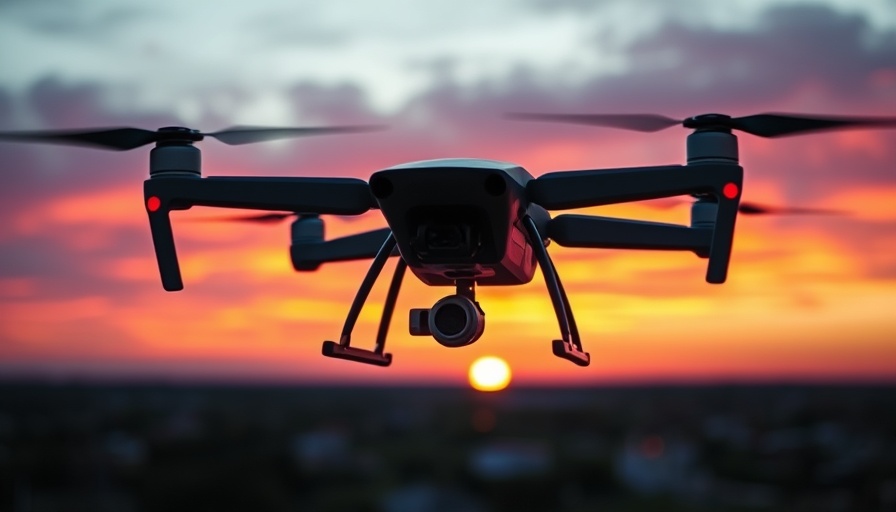
The Dawn of a New Era in Drone Infrastructure
The Uncrewed Aircraft Systems (UAS) sector is stepping into a pivotal moment with NUAIR's recent achievement in receiving the Federal Aviation Administration (FAA) Letter of Acceptance for its Surveillance-as-a-Service (SaaS) platform. This significant milestone not only advances low-altitude air traffic management but also lays the groundwork for enhanced operational safety and efficiency in U.S. airspace.
Understanding the FAA’s Near-Term Approval Process
Historically, the challenge of managing low-altitude airspace has persisted as a major hurdle for the UAS industry. The FAA predominantly relies on radar coverage around towered airports, leaving much of the remaining airspace inadequately monitored. The Near-Term Approval Process (NTAP) is designed to evaluate the safety capabilities of third-party ground-based surveillance systems, allowing operators to gain safety credits for utilizing such services when applying for necessary waivers.
What This Means for UAS Operations
NUAIR’s successful completion of NTAP signifies the FAA's endorsement of its surveillance network, making it a vital resource for safe Beyond Visual Line of Sight (BVLOS) operations. With nearly two thousand square miles of validated airspace covering over 350,000 households, this infrastructure allows for smoother and more reliable drone flight, akin to how roads pave the way for innovative transport methods.
Implications for State and Local Agencies
The approval of NUAIR's SaaS framework opens new pathways for state and local agencies, EMS providers, and various industries reliant on drone technology. First responders, for instance, can utilize drones equipped with surveillance capabilities to assess emergency situations rapidly and deploy resources more efficiently. This shift heralds a potential revolution in disaster management, allowing for rapid delivery of medical supplies and other essential services.
A Broader Perspective: How UAS is Reshaping Daily Life
As UAS technology continues to evolve, its integration into everyday operations promises to transform a multitude of sectors. Drones are not just tools for the military; they are becoming indispensable in agriculture, infrastructure inspection, and delivery services. The implications are profound; for example, organizations can leverage UAS for real-time monitoring and data collection, enhancing decision-making efficiency.
Future Directions in Airspace Management
The developments following NUAIR’s LOA signal an immense opportunity for innovations in air traffic management and safety protocols. The potential for commercial enterprises to utilize drones will likely escalate, but it also calls for continued regulatory advancements and training for drone operators. To capitalize on this growth, seamless collaboration between technology providers, governmental agencies, and industry stakeholders is essential.
Conclusion: Embrace the Drone Revolution
As we stand on the cusp of a new era in drone technology, the insights from NUAIR's achievements remind us that change is not just possible, but imminent. It's an exciting time for tech enthusiasts and industry professionals alike. Stay informed about how these advancements could benefit your sector, and be ready to adapt to the evolving landscape of air transportation.
Engage with developments in drone technology and infrastructure; subscribe to our updates for the latest insights in the industry.
 Add Row
Add Row  Add
Add 




Write A Comment